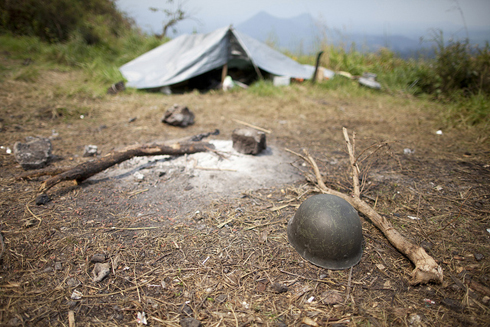
The ongoing conflict in the Democratic Republic of the Congo (DRC) has been one of the deadliest since World War II, with over 5 million casualties. Though the latest in a series of civil wars ended in 2003 and the transition to peace and democracy began in 2006, the mineral-rich eastern DRC continues to experience widespread violence. Behind the official front lines, fighting continues, with an ever-growing number of actors destabilizing an already fragile region. In recent months, it was the so-called M23 rebel movement that once again drew international attention to the DRC with its capture of Goma, a regional capital on the border with Rwanda.
Also known as the Congolese Revolutionary Army, M23 named itself after the 23 March 2009 peace accord signed between the government of the DRC and the National Congress for the Defence of the People (CNDP), a rebel militia composed mostly of ethnic Tutsis. After the collapse of the peace deal, former CNDP leader Bosco “Terminator” Ntaganda, who in 2006 was indicted by the ICC for recruiting child soldiers, led the formation of this new rebel group, which is some 1,200 to 6,000 fighters-strong. Citing unfair treatment and an incomplete fulfillment of the peace deal, which saw the integration of the group into the Congolese army, M23 led a mutiny in April 2012. Heavy fighting ensued, which eventually led to the capture of Goma at the end of November – despite the presence of MONUSCO peacekeepers and Congolese troops. Eleven days after seizing the city, however, as part of a regionally brokered deal, M23 withdrew from Goma and agreed to observe a 20 km buffer zone around the city in exchange for a range of their demands being met, including the release of political prisoners.
Although peace talks are being held between the government and the rebel leaders, it is the alleged involvement of neighboring Rwanda and Uganda in the recent crisis that has exacerbated tensions and made a resolution less likely. According to reports delivered to the Security Council‘s Sanctions Committee for the DRC, Rwanda and Uganda are supplying M23 with troops, uniforms and guns. While both countries (as well as M23 itself) deny the allegations, regional organizations such as the SADC (Southern African Development Community) and European intelligence sources confirm the findings. While the second, more detailed report by the Group of Experts alleges that “Uganda‘s more subtle support for M23 allowed the rebel group‘s political branch…to boost its external relations,” Rwandan officials are accused of providing strategic assistance to the rebel group. Indeed, Rwandan involvement appears to reach the highest levels, with the defense minister himself rumored to be co-ordinating the rebellion.
This is not the first case of Rwandan involvement in destabilizing the eastern DRC. Rwanda has a long history of backing armed movements in the country, and has been accused of manipulating Congolese politics to protect and expand its interests in the mineral-rich eastern region. It is therefore not surprising to see increased tensions between the DRC, Rwanda and Uganda as a result of the allegations made in the UN reports. However, it is not only bilateral relations that have suffered. The conflict in the eastern DRC has security implications for the region as a whole. Central Africa is what can be called an ‘insecurity complex’ with security considerations on the domestic level having significant spillover effects, and this is clearly illustrated by the current M23 rebellion.
The high number of warring parties, combatants and spoilers, and the implications of cross-border ethnic affiliations due to arbitrary colonial borders that do not follow traditional tribal lines all have destabilizing effects on the Congo and the region as a whole. In addition, disputes over land tenure, resource extraction, minority rights and citizenship continue to fuel distrust and insecurity in the DRC, which thus remains a conflict-ridden country.
According to the UN, there are 140,000 internally displaced persons in 12 sites in and around Goma alone. In the region as a whole 1.7 million people are reported to have been displaced. These issues and the on-going tensions also have implications for peacekeeping on the continent in general, as Uganda has threatened to withdraw troops from missions in other African regions. As the biggest contributor to AMISOM in Somalia, a Ugandan withdrawal would have serious implications for Somalia’s security and stability.
Aside from Security Council sanctions, the international reaction to the renewed conflict in eastern Congo has mainly taken the form of suspensions and delays of aid and assistance to Rwanda by major donor governments, including the UK, Germany, Sweden, the Netherlands, and the US. Although talks between the government of the DRC and M23 rebels resumed on 11 January 2013, the principal actors remain unwilling to address the root causes of the conflict, meaning any peace negotiations will be temporary and instability is likely to last.
For additional reading on this topic please see:
The Elusive Quest for Peace with the M23 in the DRC
A Growing Humanitarian Crisis in Eastern DRC
In the DRC Communications Wars, Rebels Learn PoC Language
For more information on issues and events that shape our world please visit the ISN’s featured editorial content and Security Watch.

